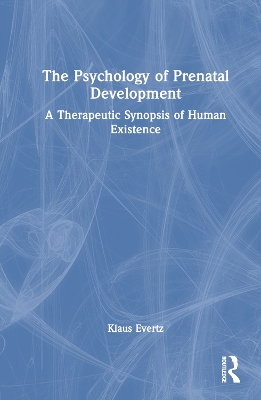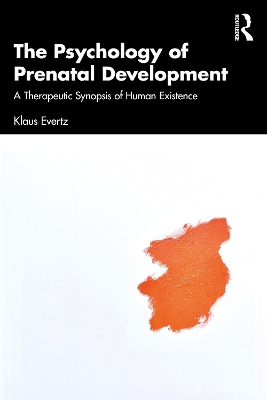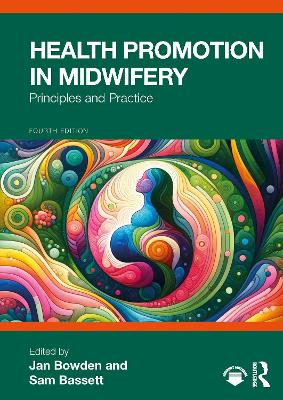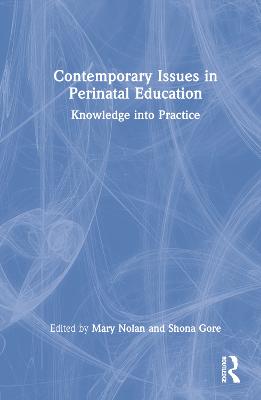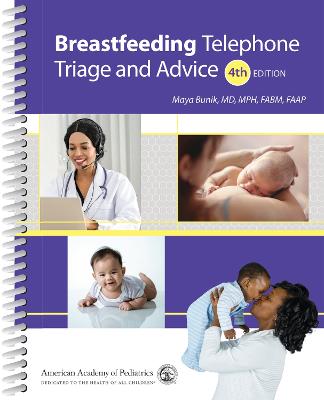Art and Practice of Home Visiting
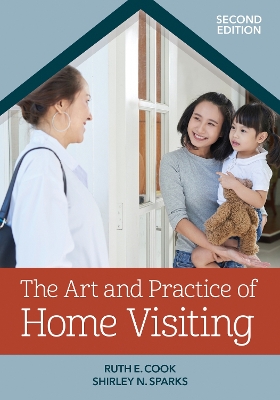 portes grátis
portes grátis
Art and Practice of Home Visiting
Cook, Ruth E; Osselaer, Carole Ivan; Wahl, Kathy; Sparks, Shirley N
Brookes Publishing Co
11/2021
264
Mole
Inglês
9781681254463
15 a 20 dias
467
Descrição não disponível.
About the Downloads
About the Authors
About the Contributor
Foreword
?By Kathy Wahl
From a Mother to Her Home Visitors
Preface
Acknowledgements
Section I
Chapter 1: An Overview of Home Visiting
Learning Outcomes
History of Home Visiting
?Eradication of Poverty by Changing Environmental Conditions
?Massive Arrival of Immigrants
?Rapid Transformation of Society
?Early Home Visitors
?Lessons from The Past
Home Visiting Today
?Competencies Needed
?Home Visitors as Coaches
?Remote Home Visiting
Philosophy and Approach to Home Visiting
?Approaches to Home Visiting
??Child Focused
??Family Focused
??Collaborative Team
Evidence-Based Practice
?Critical Needs Positively Impacted by Home Visiting
??Healthy Babies
??Safe Homes and Nurturing Relationships
??Optimal Early Learning and Long-Term Academic Achievement
??Self-Sufficient Parents
Cultural Influences
Summar
Read-Reflect-Discuss
Chapter 2: Collaborating with Families
Learning Outcomes
Family Reaction to Vulnerability and Crisis
?Increased Stress Levels
?Denial Can Be A Friend
Viewing the Family as a Whole
Understanding Familes as Systems
?Family Structure
?Cultural Orientation
?Individualism Vs Collectivism
?Family Dynamics
??Sensitive Responsiveness
??Family-Orchestrated Child Experiences
??Health and Safety
?Fathers
??Strategies to Engage Fathers
?Siblings
Family Functions
Strategies to Facilitate Family Empowerment
?Developing Empathy
?Achieving Empathy
?Asking Questions
?Listening Attentively and With Reflection
?Avoid Jargon
?Phrase Negative Information Carefully
?Respecting Family Preferences
?Preparing Families for Change
?Focusing on Strengths, Achievements and Desires
?Identifying Strategies That Will Help Families Achieve Desired Outcomes
Summary
Read-Reflect-Discuss
Section II
Chapter 3: Building Home Visitor:Family Relationships
Learning Outcomes
First Impressions
?Personal Characteristics of The Home Visitor
?Emotional Needs of Both Families and Home Visitors
The Initial Visit
?Greeting
?Hand Cleansing
?Act Like You Are A Guest in The Home
?Blending Cultures
?Getting Down to Business
?Connecting with Siblings
Other Home Visitor Behaviors That Build Relationships
?Be Reliable
?Abandon Your Agenda
?Observe Yourself
Developing A Plan of Intervention with The Family
?Identifying the FamilyaEUR (TM)s Most Important Concerns
?Explain and Summarize All Assessment Results
??Summarize and Prioritize
Assisting the Family with Implementation of The Plan
?Information and Services
??On-Line Information
??Resource Supports
??Social Supports
Summary
Read-Reflect-Discuss
Chapter 4: Facilitating Parent-Child Relationships
Learning Outcomes
The Caregiver-Infant Relationship
?Relationship Terminology
Types of Attachment
?Secure Attachment
?Ambivalent Attachment
?Avoidant Attachment
?Disorganized Attachment
?Interference with Attachment-Parents
?Interference with Attachment-Infants
Parent-Infant Interactions
?Infant Communication Signals
??Eye Gaze
??Joint Attention
??Gestures
??Reciprocity
Interactional Patterns of Children with Unique Needs
?What to Consider When Encouraging Caregiver-Infant Attachment
?Adult-Adult Dyadic Interactions
?Intervention When Caregiver-Infant Interaction Signals Are Unique
The Infant Mental Health Model (IMH)
?Carefully Observe the Evidence of Attachment Behaviors
?Establishing Interaction Through Reciprocity
??Serve and Return
??Establishing Attachment Through Feeding
??Establishing Attachment Through Play
Intervention in A Cultural Context
Reflecting on Success as A Home Visitor
?Green Flags of Effective Visits
?Red Flags of Ineffective Visits
Summary
Read-Reflect-Discuss
Chapter 5: Structure of Home Visitations
Learning Outcomes
Before Home Visiting Begins
?Assessment for Program Planning and Monitoring
??Formal Assessment
??Informal Assessment
?Factors to Be Considered in Interpretation of Assessment
Home Visiting Activities
?Format of Home Visits
??Upon Arrival
??What's New?
??Today's Activities
??Where to Begin?
??Toy Bag or Not?
??Reflect and Plan for The Next Visit
??What's Coming Up?
??Anything Else?
??Good-Bye
?Elements of A Home Visit
??Upon Arrival
??What's New?
??Today's Activities
??Where to Begin?
??Toy Bag or Not?
??Reflect and Plan for The Next Visit
??What's Coming Up?
??Anything Else?
??Good-Bye
Approaches to Intervention
?Home Visitor Direct Approach
??Unique Role of Modeling
?The Eight Steps of Modeling
??Applied Behavior Analysis (Aba)
??Naturalistic Developmental Behavioral Intervention (NDBI)
?Home Visitor Indirect Approach
??Family-Guided Routine Based Intervention
?Points to Keep in Mind
?Problems to Avoid
?Direct Vs Indirect Approaches
?Home Visitors as Coaches
?Parents as Interventionists
Summary
Read-Reflect-Discuss
Section III
Chapter 6: Specific Family Challenges
Learning Outcomes
Adverse Childhood Experiences
?Trauma Informed Care and the 2020 Pandemic
?Role of the Home Visitor
?Potential Resources
Parents with Mental Health Challenges
?Role of the Home Visitor
?Potential Resources
Parents with Cognitive Disabilities
?Role of the Home Visitor
?Potential Resources
Teenage Parents
?Role of the Home Visitor
?Potential Resources
Foster and Adoptive Parents
?Role of the Home Visitor
?Potential Resources
Grandparents In The Role Of Parents
?Role of the Home Visitor
?Potential Resources
Military Families
?Military Families are Resilient
?Military Family Separations are Difficult and Complicated
?Most Military Parents Were Not Military Children
?Change is Constant
?Peers can Pave the Way for Service Members
?Military Lingo
?Not Everyone in Uniform has Access to the Same Programs
?Role of the Home Visitor
?Potential Resources
Poverty
?Homelessness
?Role of the Home Visitor
?Potential Resources
Immigrant And Refugee Families
?Avoiding Communication/Cultural Barriers with Effective Interpreters/Translators
?Role of the Home Visitor
?Potential Resources
Summary
Read-Reflect-Discuss
Chapter 7: Responding to Children's Challenges
Learning Outcomes
Primary and Secondary Conditions
Daily Challenges
Feeding
?Oral-Motor-Skill Deficits
?Feeding within the Cultural Context
?Children with Gastroesophageal Reflux Disorder
?Children on Gastrostomy Tubes
?Need for a Feeding Specialist
?Role of the Home Visitor
??Structure
??Social Modeling
??Behavioral Treatment
??Make Foods Manageable
??Encourage Children to Use Their Cognitive Skills
?Potential Resources
Sleeping
?Sleep Routines within the Cultural Context
?Need for Concern about Sleep Disturbances
?Signs of Possible Problems with Sleep
?Role of the Home Visitor
??Establishing a Consistent Bedtime Routine
?Potential Resources
Speech and Language Challenges
?Characteristics of a Possible Language Disorder
?Characteristics of a Possible Articulation Disorder
?Characteristics of a Possible Fluency Disorder
?Role of the Home Visitor
??Imitation
??Taking Turns
??Shared Regard
??Play Games
?Potential Resources
Hearing Challenges
?Types of Hearing Loss
?Role of the Home Visitor
Medically Fragile
?Staying Healthy
?Multiple Challenges
?Role of the Home Visitor
?Potential Resources
Visual Challenges
?Self-stimulating Behaviors
?Language Development with Children with Visual Challenges
?Role of the Home Visitor
?Potential Resources
Summary
Read-Reflect-Discuss
Chapter 8: Enduring Challenges With Carole Osselear
Learning Outcomes
Common Enduring Challenges
Motor Challenges
?Role of the Home Visitor
?Potential Resources
Developmental Challenges
?Cultural Differences in Developmental Challenges
?Down Syndrome
?Pointers for Working with Children with Down Syndrome
?Role of the Home Visitor
Autism Spectrum Disorders
?The Autism Spectrum
??Facilitating a Diagnosis
??Responding When Parents Suspect ASD
??Responding When Parents Look for Answers
?Role of the Home Visitor
?Potential Resources
Fetal Alcohol Spectrum Disorder
?Diagnosis
?Symptoms of FASD are Variable
??Intervention Concepts
?Role of the Home Visitor
?Potential Resources
Summary
Read-Reflect-Discuss
Chapter 9: Personal Concerns of the Home Visitor
Learning Outcomes
Ethical Issues
?Confidentiality
?Boundaries
?Cross-cultural Conflicts
Agency Guidelines
?Home Visitor-Agency or Legal Issues
Boundaries in Family Service
Noncooperative Families
?Making Compromises
?Discontinuing Visits
Personal Safety
Nurturing the Nurturer
Personal Organization
Summary
Read-Reflect-Discuss
References
Appendixes
?Appendix A: Infant Development from Birth to 3 Years - Heads Up
?Appendix B: Infant Development from Birth to 3 Years - The Crawler-Creeper
?Appendix C: Infant Development from Birth to 3 Years - The Cruiser
?Appendix D: Infant Development from Birth to 3 Years - The Walker
?Appendix E: Infant Development from Birth to 3 Years - The Doer
?Appendix F: Infant Development from Birth to 3 Years - The Tester
?Appendix G: Speech and Language Development of Infants and Young Children
?Appendix H: Home Visit Record Form
?Appendix I: Toys Cleverly Disguised as Household Items
?Appendix J: Guidelines for Referral: Red Flags
?Appendix K: Suggested Resources (by Subject)
Glossary
Index
About the Authors
About the Contributor
Foreword
?By Kathy Wahl
From a Mother to Her Home Visitors
Preface
Acknowledgements
Section I
Chapter 1: An Overview of Home Visiting
Learning Outcomes
History of Home Visiting
?Eradication of Poverty by Changing Environmental Conditions
?Massive Arrival of Immigrants
?Rapid Transformation of Society
?Early Home Visitors
?Lessons from The Past
Home Visiting Today
?Competencies Needed
?Home Visitors as Coaches
?Remote Home Visiting
Philosophy and Approach to Home Visiting
?Approaches to Home Visiting
??Child Focused
??Family Focused
??Collaborative Team
Evidence-Based Practice
?Critical Needs Positively Impacted by Home Visiting
??Healthy Babies
??Safe Homes and Nurturing Relationships
??Optimal Early Learning and Long-Term Academic Achievement
??Self-Sufficient Parents
Cultural Influences
Summar
Read-Reflect-Discuss
Chapter 2: Collaborating with Families
Learning Outcomes
Family Reaction to Vulnerability and Crisis
?Increased Stress Levels
?Denial Can Be A Friend
Viewing the Family as a Whole
Understanding Familes as Systems
?Family Structure
?Cultural Orientation
?Individualism Vs Collectivism
?Family Dynamics
??Sensitive Responsiveness
??Family-Orchestrated Child Experiences
??Health and Safety
?Fathers
??Strategies to Engage Fathers
?Siblings
Family Functions
Strategies to Facilitate Family Empowerment
?Developing Empathy
?Achieving Empathy
?Asking Questions
?Listening Attentively and With Reflection
?Avoid Jargon
?Phrase Negative Information Carefully
?Respecting Family Preferences
?Preparing Families for Change
?Focusing on Strengths, Achievements and Desires
?Identifying Strategies That Will Help Families Achieve Desired Outcomes
Summary
Read-Reflect-Discuss
Section II
Chapter 3: Building Home Visitor:Family Relationships
Learning Outcomes
First Impressions
?Personal Characteristics of The Home Visitor
?Emotional Needs of Both Families and Home Visitors
The Initial Visit
?Greeting
?Hand Cleansing
?Act Like You Are A Guest in The Home
?Blending Cultures
?Getting Down to Business
?Connecting with Siblings
Other Home Visitor Behaviors That Build Relationships
?Be Reliable
?Abandon Your Agenda
?Observe Yourself
Developing A Plan of Intervention with The Family
?Identifying the FamilyaEUR (TM)s Most Important Concerns
?Explain and Summarize All Assessment Results
??Summarize and Prioritize
Assisting the Family with Implementation of The Plan
?Information and Services
??On-Line Information
??Resource Supports
??Social Supports
Summary
Read-Reflect-Discuss
Chapter 4: Facilitating Parent-Child Relationships
Learning Outcomes
The Caregiver-Infant Relationship
?Relationship Terminology
Types of Attachment
?Secure Attachment
?Ambivalent Attachment
?Avoidant Attachment
?Disorganized Attachment
?Interference with Attachment-Parents
?Interference with Attachment-Infants
Parent-Infant Interactions
?Infant Communication Signals
??Eye Gaze
??Joint Attention
??Gestures
??Reciprocity
Interactional Patterns of Children with Unique Needs
?What to Consider When Encouraging Caregiver-Infant Attachment
?Adult-Adult Dyadic Interactions
?Intervention When Caregiver-Infant Interaction Signals Are Unique
The Infant Mental Health Model (IMH)
?Carefully Observe the Evidence of Attachment Behaviors
?Establishing Interaction Through Reciprocity
??Serve and Return
??Establishing Attachment Through Feeding
??Establishing Attachment Through Play
Intervention in A Cultural Context
Reflecting on Success as A Home Visitor
?Green Flags of Effective Visits
?Red Flags of Ineffective Visits
Summary
Read-Reflect-Discuss
Chapter 5: Structure of Home Visitations
Learning Outcomes
Before Home Visiting Begins
?Assessment for Program Planning and Monitoring
??Formal Assessment
??Informal Assessment
?Factors to Be Considered in Interpretation of Assessment
Home Visiting Activities
?Format of Home Visits
??Upon Arrival
??What's New?
??Today's Activities
??Where to Begin?
??Toy Bag or Not?
??Reflect and Plan for The Next Visit
??What's Coming Up?
??Anything Else?
??Good-Bye
?Elements of A Home Visit
??Upon Arrival
??What's New?
??Today's Activities
??Where to Begin?
??Toy Bag or Not?
??Reflect and Plan for The Next Visit
??What's Coming Up?
??Anything Else?
??Good-Bye
Approaches to Intervention
?Home Visitor Direct Approach
??Unique Role of Modeling
?The Eight Steps of Modeling
??Applied Behavior Analysis (Aba)
??Naturalistic Developmental Behavioral Intervention (NDBI)
?Home Visitor Indirect Approach
??Family-Guided Routine Based Intervention
?Points to Keep in Mind
?Problems to Avoid
?Direct Vs Indirect Approaches
?Home Visitors as Coaches
?Parents as Interventionists
Summary
Read-Reflect-Discuss
Section III
Chapter 6: Specific Family Challenges
Learning Outcomes
Adverse Childhood Experiences
?Trauma Informed Care and the 2020 Pandemic
?Role of the Home Visitor
?Potential Resources
Parents with Mental Health Challenges
?Role of the Home Visitor
?Potential Resources
Parents with Cognitive Disabilities
?Role of the Home Visitor
?Potential Resources
Teenage Parents
?Role of the Home Visitor
?Potential Resources
Foster and Adoptive Parents
?Role of the Home Visitor
?Potential Resources
Grandparents In The Role Of Parents
?Role of the Home Visitor
?Potential Resources
Military Families
?Military Families are Resilient
?Military Family Separations are Difficult and Complicated
?Most Military Parents Were Not Military Children
?Change is Constant
?Peers can Pave the Way for Service Members
?Military Lingo
?Not Everyone in Uniform has Access to the Same Programs
?Role of the Home Visitor
?Potential Resources
Poverty
?Homelessness
?Role of the Home Visitor
?Potential Resources
Immigrant And Refugee Families
?Avoiding Communication/Cultural Barriers with Effective Interpreters/Translators
?Role of the Home Visitor
?Potential Resources
Summary
Read-Reflect-Discuss
Chapter 7: Responding to Children's Challenges
Learning Outcomes
Primary and Secondary Conditions
Daily Challenges
Feeding
?Oral-Motor-Skill Deficits
?Feeding within the Cultural Context
?Children with Gastroesophageal Reflux Disorder
?Children on Gastrostomy Tubes
?Need for a Feeding Specialist
?Role of the Home Visitor
??Structure
??Social Modeling
??Behavioral Treatment
??Make Foods Manageable
??Encourage Children to Use Their Cognitive Skills
?Potential Resources
Sleeping
?Sleep Routines within the Cultural Context
?Need for Concern about Sleep Disturbances
?Signs of Possible Problems with Sleep
?Role of the Home Visitor
??Establishing a Consistent Bedtime Routine
?Potential Resources
Speech and Language Challenges
?Characteristics of a Possible Language Disorder
?Characteristics of a Possible Articulation Disorder
?Characteristics of a Possible Fluency Disorder
?Role of the Home Visitor
??Imitation
??Taking Turns
??Shared Regard
??Play Games
?Potential Resources
Hearing Challenges
?Types of Hearing Loss
?Role of the Home Visitor
Medically Fragile
?Staying Healthy
?Multiple Challenges
?Role of the Home Visitor
?Potential Resources
Visual Challenges
?Self-stimulating Behaviors
?Language Development with Children with Visual Challenges
?Role of the Home Visitor
?Potential Resources
Summary
Read-Reflect-Discuss
Chapter 8: Enduring Challenges With Carole Osselear
Learning Outcomes
Common Enduring Challenges
Motor Challenges
?Role of the Home Visitor
?Potential Resources
Developmental Challenges
?Cultural Differences in Developmental Challenges
?Down Syndrome
?Pointers for Working with Children with Down Syndrome
?Role of the Home Visitor
Autism Spectrum Disorders
?The Autism Spectrum
??Facilitating a Diagnosis
??Responding When Parents Suspect ASD
??Responding When Parents Look for Answers
?Role of the Home Visitor
?Potential Resources
Fetal Alcohol Spectrum Disorder
?Diagnosis
?Symptoms of FASD are Variable
??Intervention Concepts
?Role of the Home Visitor
?Potential Resources
Summary
Read-Reflect-Discuss
Chapter 9: Personal Concerns of the Home Visitor
Learning Outcomes
Ethical Issues
?Confidentiality
?Boundaries
?Cross-cultural Conflicts
Agency Guidelines
?Home Visitor-Agency or Legal Issues
Boundaries in Family Service
Noncooperative Families
?Making Compromises
?Discontinuing Visits
Personal Safety
Nurturing the Nurturer
Personal Organization
Summary
Read-Reflect-Discuss
References
Appendixes
?Appendix A: Infant Development from Birth to 3 Years - Heads Up
?Appendix B: Infant Development from Birth to 3 Years - The Crawler-Creeper
?Appendix C: Infant Development from Birth to 3 Years - The Cruiser
?Appendix D: Infant Development from Birth to 3 Years - The Walker
?Appendix E: Infant Development from Birth to 3 Years - The Doer
?Appendix F: Infant Development from Birth to 3 Years - The Tester
?Appendix G: Speech and Language Development of Infants and Young Children
?Appendix H: Home Visit Record Form
?Appendix I: Toys Cleverly Disguised as Household Items
?Appendix J: Guidelines for Referral: Red Flags
?Appendix K: Suggested Resources (by Subject)
Glossary
Index
Este título pertence ao(s) assunto(s) indicados(s). Para ver outros títulos clique no assunto desejado.
home visitor; parent educator; parent-child; relationships; culturally sensitive; reflective; family; families; family-centered; early intervention; Part C services; parent; parenting; strategies; interpreter; translator; assessment; natural environment; ASD; visual impairment; delayed speech; developmental delay
About the Downloads
About the Authors
About the Contributor
Foreword
?By Kathy Wahl
From a Mother to Her Home Visitors
Preface
Acknowledgements
Section I
Chapter 1: An Overview of Home Visiting
Learning Outcomes
History of Home Visiting
?Eradication of Poverty by Changing Environmental Conditions
?Massive Arrival of Immigrants
?Rapid Transformation of Society
?Early Home Visitors
?Lessons from The Past
Home Visiting Today
?Competencies Needed
?Home Visitors as Coaches
?Remote Home Visiting
Philosophy and Approach to Home Visiting
?Approaches to Home Visiting
??Child Focused
??Family Focused
??Collaborative Team
Evidence-Based Practice
?Critical Needs Positively Impacted by Home Visiting
??Healthy Babies
??Safe Homes and Nurturing Relationships
??Optimal Early Learning and Long-Term Academic Achievement
??Self-Sufficient Parents
Cultural Influences
Summar
Read-Reflect-Discuss
Chapter 2: Collaborating with Families
Learning Outcomes
Family Reaction to Vulnerability and Crisis
?Increased Stress Levels
?Denial Can Be A Friend
Viewing the Family as a Whole
Understanding Familes as Systems
?Family Structure
?Cultural Orientation
?Individualism Vs Collectivism
?Family Dynamics
??Sensitive Responsiveness
??Family-Orchestrated Child Experiences
??Health and Safety
?Fathers
??Strategies to Engage Fathers
?Siblings
Family Functions
Strategies to Facilitate Family Empowerment
?Developing Empathy
?Achieving Empathy
?Asking Questions
?Listening Attentively and With Reflection
?Avoid Jargon
?Phrase Negative Information Carefully
?Respecting Family Preferences
?Preparing Families for Change
?Focusing on Strengths, Achievements and Desires
?Identifying Strategies That Will Help Families Achieve Desired Outcomes
Summary
Read-Reflect-Discuss
Section II
Chapter 3: Building Home Visitor:Family Relationships
Learning Outcomes
First Impressions
?Personal Characteristics of The Home Visitor
?Emotional Needs of Both Families and Home Visitors
The Initial Visit
?Greeting
?Hand Cleansing
?Act Like You Are A Guest in The Home
?Blending Cultures
?Getting Down to Business
?Connecting with Siblings
Other Home Visitor Behaviors That Build Relationships
?Be Reliable
?Abandon Your Agenda
?Observe Yourself
Developing A Plan of Intervention with The Family
?Identifying the FamilyaEUR (TM)s Most Important Concerns
?Explain and Summarize All Assessment Results
??Summarize and Prioritize
Assisting the Family with Implementation of The Plan
?Information and Services
??On-Line Information
??Resource Supports
??Social Supports
Summary
Read-Reflect-Discuss
Chapter 4: Facilitating Parent-Child Relationships
Learning Outcomes
The Caregiver-Infant Relationship
?Relationship Terminology
Types of Attachment
?Secure Attachment
?Ambivalent Attachment
?Avoidant Attachment
?Disorganized Attachment
?Interference with Attachment-Parents
?Interference with Attachment-Infants
Parent-Infant Interactions
?Infant Communication Signals
??Eye Gaze
??Joint Attention
??Gestures
??Reciprocity
Interactional Patterns of Children with Unique Needs
?What to Consider When Encouraging Caregiver-Infant Attachment
?Adult-Adult Dyadic Interactions
?Intervention When Caregiver-Infant Interaction Signals Are Unique
The Infant Mental Health Model (IMH)
?Carefully Observe the Evidence of Attachment Behaviors
?Establishing Interaction Through Reciprocity
??Serve and Return
??Establishing Attachment Through Feeding
??Establishing Attachment Through Play
Intervention in A Cultural Context
Reflecting on Success as A Home Visitor
?Green Flags of Effective Visits
?Red Flags of Ineffective Visits
Summary
Read-Reflect-Discuss
Chapter 5: Structure of Home Visitations
Learning Outcomes
Before Home Visiting Begins
?Assessment for Program Planning and Monitoring
??Formal Assessment
??Informal Assessment
?Factors to Be Considered in Interpretation of Assessment
Home Visiting Activities
?Format of Home Visits
??Upon Arrival
??What's New?
??Today's Activities
??Where to Begin?
??Toy Bag or Not?
??Reflect and Plan for The Next Visit
??What's Coming Up?
??Anything Else?
??Good-Bye
?Elements of A Home Visit
??Upon Arrival
??What's New?
??Today's Activities
??Where to Begin?
??Toy Bag or Not?
??Reflect and Plan for The Next Visit
??What's Coming Up?
??Anything Else?
??Good-Bye
Approaches to Intervention
?Home Visitor Direct Approach
??Unique Role of Modeling
?The Eight Steps of Modeling
??Applied Behavior Analysis (Aba)
??Naturalistic Developmental Behavioral Intervention (NDBI)
?Home Visitor Indirect Approach
??Family-Guided Routine Based Intervention
?Points to Keep in Mind
?Problems to Avoid
?Direct Vs Indirect Approaches
?Home Visitors as Coaches
?Parents as Interventionists
Summary
Read-Reflect-Discuss
Section III
Chapter 6: Specific Family Challenges
Learning Outcomes
Adverse Childhood Experiences
?Trauma Informed Care and the 2020 Pandemic
?Role of the Home Visitor
?Potential Resources
Parents with Mental Health Challenges
?Role of the Home Visitor
?Potential Resources
Parents with Cognitive Disabilities
?Role of the Home Visitor
?Potential Resources
Teenage Parents
?Role of the Home Visitor
?Potential Resources
Foster and Adoptive Parents
?Role of the Home Visitor
?Potential Resources
Grandparents In The Role Of Parents
?Role of the Home Visitor
?Potential Resources
Military Families
?Military Families are Resilient
?Military Family Separations are Difficult and Complicated
?Most Military Parents Were Not Military Children
?Change is Constant
?Peers can Pave the Way for Service Members
?Military Lingo
?Not Everyone in Uniform has Access to the Same Programs
?Role of the Home Visitor
?Potential Resources
Poverty
?Homelessness
?Role of the Home Visitor
?Potential Resources
Immigrant And Refugee Families
?Avoiding Communication/Cultural Barriers with Effective Interpreters/Translators
?Role of the Home Visitor
?Potential Resources
Summary
Read-Reflect-Discuss
Chapter 7: Responding to Children's Challenges
Learning Outcomes
Primary and Secondary Conditions
Daily Challenges
Feeding
?Oral-Motor-Skill Deficits
?Feeding within the Cultural Context
?Children with Gastroesophageal Reflux Disorder
?Children on Gastrostomy Tubes
?Need for a Feeding Specialist
?Role of the Home Visitor
??Structure
??Social Modeling
??Behavioral Treatment
??Make Foods Manageable
??Encourage Children to Use Their Cognitive Skills
?Potential Resources
Sleeping
?Sleep Routines within the Cultural Context
?Need for Concern about Sleep Disturbances
?Signs of Possible Problems with Sleep
?Role of the Home Visitor
??Establishing a Consistent Bedtime Routine
?Potential Resources
Speech and Language Challenges
?Characteristics of a Possible Language Disorder
?Characteristics of a Possible Articulation Disorder
?Characteristics of a Possible Fluency Disorder
?Role of the Home Visitor
??Imitation
??Taking Turns
??Shared Regard
??Play Games
?Potential Resources
Hearing Challenges
?Types of Hearing Loss
?Role of the Home Visitor
Medically Fragile
?Staying Healthy
?Multiple Challenges
?Role of the Home Visitor
?Potential Resources
Visual Challenges
?Self-stimulating Behaviors
?Language Development with Children with Visual Challenges
?Role of the Home Visitor
?Potential Resources
Summary
Read-Reflect-Discuss
Chapter 8: Enduring Challenges With Carole Osselear
Learning Outcomes
Common Enduring Challenges
Motor Challenges
?Role of the Home Visitor
?Potential Resources
Developmental Challenges
?Cultural Differences in Developmental Challenges
?Down Syndrome
?Pointers for Working with Children with Down Syndrome
?Role of the Home Visitor
Autism Spectrum Disorders
?The Autism Spectrum
??Facilitating a Diagnosis
??Responding When Parents Suspect ASD
??Responding When Parents Look for Answers
?Role of the Home Visitor
?Potential Resources
Fetal Alcohol Spectrum Disorder
?Diagnosis
?Symptoms of FASD are Variable
??Intervention Concepts
?Role of the Home Visitor
?Potential Resources
Summary
Read-Reflect-Discuss
Chapter 9: Personal Concerns of the Home Visitor
Learning Outcomes
Ethical Issues
?Confidentiality
?Boundaries
?Cross-cultural Conflicts
Agency Guidelines
?Home Visitor-Agency or Legal Issues
Boundaries in Family Service
Noncooperative Families
?Making Compromises
?Discontinuing Visits
Personal Safety
Nurturing the Nurturer
Personal Organization
Summary
Read-Reflect-Discuss
References
Appendixes
?Appendix A: Infant Development from Birth to 3 Years - Heads Up
?Appendix B: Infant Development from Birth to 3 Years - The Crawler-Creeper
?Appendix C: Infant Development from Birth to 3 Years - The Cruiser
?Appendix D: Infant Development from Birth to 3 Years - The Walker
?Appendix E: Infant Development from Birth to 3 Years - The Doer
?Appendix F: Infant Development from Birth to 3 Years - The Tester
?Appendix G: Speech and Language Development of Infants and Young Children
?Appendix H: Home Visit Record Form
?Appendix I: Toys Cleverly Disguised as Household Items
?Appendix J: Guidelines for Referral: Red Flags
?Appendix K: Suggested Resources (by Subject)
Glossary
Index
About the Authors
About the Contributor
Foreword
?By Kathy Wahl
From a Mother to Her Home Visitors
Preface
Acknowledgements
Section I
Chapter 1: An Overview of Home Visiting
Learning Outcomes
History of Home Visiting
?Eradication of Poverty by Changing Environmental Conditions
?Massive Arrival of Immigrants
?Rapid Transformation of Society
?Early Home Visitors
?Lessons from The Past
Home Visiting Today
?Competencies Needed
?Home Visitors as Coaches
?Remote Home Visiting
Philosophy and Approach to Home Visiting
?Approaches to Home Visiting
??Child Focused
??Family Focused
??Collaborative Team
Evidence-Based Practice
?Critical Needs Positively Impacted by Home Visiting
??Healthy Babies
??Safe Homes and Nurturing Relationships
??Optimal Early Learning and Long-Term Academic Achievement
??Self-Sufficient Parents
Cultural Influences
Summar
Read-Reflect-Discuss
Chapter 2: Collaborating with Families
Learning Outcomes
Family Reaction to Vulnerability and Crisis
?Increased Stress Levels
?Denial Can Be A Friend
Viewing the Family as a Whole
Understanding Familes as Systems
?Family Structure
?Cultural Orientation
?Individualism Vs Collectivism
?Family Dynamics
??Sensitive Responsiveness
??Family-Orchestrated Child Experiences
??Health and Safety
?Fathers
??Strategies to Engage Fathers
?Siblings
Family Functions
Strategies to Facilitate Family Empowerment
?Developing Empathy
?Achieving Empathy
?Asking Questions
?Listening Attentively and With Reflection
?Avoid Jargon
?Phrase Negative Information Carefully
?Respecting Family Preferences
?Preparing Families for Change
?Focusing on Strengths, Achievements and Desires
?Identifying Strategies That Will Help Families Achieve Desired Outcomes
Summary
Read-Reflect-Discuss
Section II
Chapter 3: Building Home Visitor:Family Relationships
Learning Outcomes
First Impressions
?Personal Characteristics of The Home Visitor
?Emotional Needs of Both Families and Home Visitors
The Initial Visit
?Greeting
?Hand Cleansing
?Act Like You Are A Guest in The Home
?Blending Cultures
?Getting Down to Business
?Connecting with Siblings
Other Home Visitor Behaviors That Build Relationships
?Be Reliable
?Abandon Your Agenda
?Observe Yourself
Developing A Plan of Intervention with The Family
?Identifying the FamilyaEUR (TM)s Most Important Concerns
?Explain and Summarize All Assessment Results
??Summarize and Prioritize
Assisting the Family with Implementation of The Plan
?Information and Services
??On-Line Information
??Resource Supports
??Social Supports
Summary
Read-Reflect-Discuss
Chapter 4: Facilitating Parent-Child Relationships
Learning Outcomes
The Caregiver-Infant Relationship
?Relationship Terminology
Types of Attachment
?Secure Attachment
?Ambivalent Attachment
?Avoidant Attachment
?Disorganized Attachment
?Interference with Attachment-Parents
?Interference with Attachment-Infants
Parent-Infant Interactions
?Infant Communication Signals
??Eye Gaze
??Joint Attention
??Gestures
??Reciprocity
Interactional Patterns of Children with Unique Needs
?What to Consider When Encouraging Caregiver-Infant Attachment
?Adult-Adult Dyadic Interactions
?Intervention When Caregiver-Infant Interaction Signals Are Unique
The Infant Mental Health Model (IMH)
?Carefully Observe the Evidence of Attachment Behaviors
?Establishing Interaction Through Reciprocity
??Serve and Return
??Establishing Attachment Through Feeding
??Establishing Attachment Through Play
Intervention in A Cultural Context
Reflecting on Success as A Home Visitor
?Green Flags of Effective Visits
?Red Flags of Ineffective Visits
Summary
Read-Reflect-Discuss
Chapter 5: Structure of Home Visitations
Learning Outcomes
Before Home Visiting Begins
?Assessment for Program Planning and Monitoring
??Formal Assessment
??Informal Assessment
?Factors to Be Considered in Interpretation of Assessment
Home Visiting Activities
?Format of Home Visits
??Upon Arrival
??What's New?
??Today's Activities
??Where to Begin?
??Toy Bag or Not?
??Reflect and Plan for The Next Visit
??What's Coming Up?
??Anything Else?
??Good-Bye
?Elements of A Home Visit
??Upon Arrival
??What's New?
??Today's Activities
??Where to Begin?
??Toy Bag or Not?
??Reflect and Plan for The Next Visit
??What's Coming Up?
??Anything Else?
??Good-Bye
Approaches to Intervention
?Home Visitor Direct Approach
??Unique Role of Modeling
?The Eight Steps of Modeling
??Applied Behavior Analysis (Aba)
??Naturalistic Developmental Behavioral Intervention (NDBI)
?Home Visitor Indirect Approach
??Family-Guided Routine Based Intervention
?Points to Keep in Mind
?Problems to Avoid
?Direct Vs Indirect Approaches
?Home Visitors as Coaches
?Parents as Interventionists
Summary
Read-Reflect-Discuss
Section III
Chapter 6: Specific Family Challenges
Learning Outcomes
Adverse Childhood Experiences
?Trauma Informed Care and the 2020 Pandemic
?Role of the Home Visitor
?Potential Resources
Parents with Mental Health Challenges
?Role of the Home Visitor
?Potential Resources
Parents with Cognitive Disabilities
?Role of the Home Visitor
?Potential Resources
Teenage Parents
?Role of the Home Visitor
?Potential Resources
Foster and Adoptive Parents
?Role of the Home Visitor
?Potential Resources
Grandparents In The Role Of Parents
?Role of the Home Visitor
?Potential Resources
Military Families
?Military Families are Resilient
?Military Family Separations are Difficult and Complicated
?Most Military Parents Were Not Military Children
?Change is Constant
?Peers can Pave the Way for Service Members
?Military Lingo
?Not Everyone in Uniform has Access to the Same Programs
?Role of the Home Visitor
?Potential Resources
Poverty
?Homelessness
?Role of the Home Visitor
?Potential Resources
Immigrant And Refugee Families
?Avoiding Communication/Cultural Barriers with Effective Interpreters/Translators
?Role of the Home Visitor
?Potential Resources
Summary
Read-Reflect-Discuss
Chapter 7: Responding to Children's Challenges
Learning Outcomes
Primary and Secondary Conditions
Daily Challenges
Feeding
?Oral-Motor-Skill Deficits
?Feeding within the Cultural Context
?Children with Gastroesophageal Reflux Disorder
?Children on Gastrostomy Tubes
?Need for a Feeding Specialist
?Role of the Home Visitor
??Structure
??Social Modeling
??Behavioral Treatment
??Make Foods Manageable
??Encourage Children to Use Their Cognitive Skills
?Potential Resources
Sleeping
?Sleep Routines within the Cultural Context
?Need for Concern about Sleep Disturbances
?Signs of Possible Problems with Sleep
?Role of the Home Visitor
??Establishing a Consistent Bedtime Routine
?Potential Resources
Speech and Language Challenges
?Characteristics of a Possible Language Disorder
?Characteristics of a Possible Articulation Disorder
?Characteristics of a Possible Fluency Disorder
?Role of the Home Visitor
??Imitation
??Taking Turns
??Shared Regard
??Play Games
?Potential Resources
Hearing Challenges
?Types of Hearing Loss
?Role of the Home Visitor
Medically Fragile
?Staying Healthy
?Multiple Challenges
?Role of the Home Visitor
?Potential Resources
Visual Challenges
?Self-stimulating Behaviors
?Language Development with Children with Visual Challenges
?Role of the Home Visitor
?Potential Resources
Summary
Read-Reflect-Discuss
Chapter 8: Enduring Challenges With Carole Osselear
Learning Outcomes
Common Enduring Challenges
Motor Challenges
?Role of the Home Visitor
?Potential Resources
Developmental Challenges
?Cultural Differences in Developmental Challenges
?Down Syndrome
?Pointers for Working with Children with Down Syndrome
?Role of the Home Visitor
Autism Spectrum Disorders
?The Autism Spectrum
??Facilitating a Diagnosis
??Responding When Parents Suspect ASD
??Responding When Parents Look for Answers
?Role of the Home Visitor
?Potential Resources
Fetal Alcohol Spectrum Disorder
?Diagnosis
?Symptoms of FASD are Variable
??Intervention Concepts
?Role of the Home Visitor
?Potential Resources
Summary
Read-Reflect-Discuss
Chapter 9: Personal Concerns of the Home Visitor
Learning Outcomes
Ethical Issues
?Confidentiality
?Boundaries
?Cross-cultural Conflicts
Agency Guidelines
?Home Visitor-Agency or Legal Issues
Boundaries in Family Service
Noncooperative Families
?Making Compromises
?Discontinuing Visits
Personal Safety
Nurturing the Nurturer
Personal Organization
Summary
Read-Reflect-Discuss
References
Appendixes
?Appendix A: Infant Development from Birth to 3 Years - Heads Up
?Appendix B: Infant Development from Birth to 3 Years - The Crawler-Creeper
?Appendix C: Infant Development from Birth to 3 Years - The Cruiser
?Appendix D: Infant Development from Birth to 3 Years - The Walker
?Appendix E: Infant Development from Birth to 3 Years - The Doer
?Appendix F: Infant Development from Birth to 3 Years - The Tester
?Appendix G: Speech and Language Development of Infants and Young Children
?Appendix H: Home Visit Record Form
?Appendix I: Toys Cleverly Disguised as Household Items
?Appendix J: Guidelines for Referral: Red Flags
?Appendix K: Suggested Resources (by Subject)
Glossary
Index
Este título pertence ao(s) assunto(s) indicados(s). Para ver outros títulos clique no assunto desejado.
home visitor; parent educator; parent-child; relationships; culturally sensitive; reflective; family; families; family-centered; early intervention; Part C services; parent; parenting; strategies; interpreter; translator; assessment; natural environment; ASD; visual impairment; delayed speech; developmental delay

